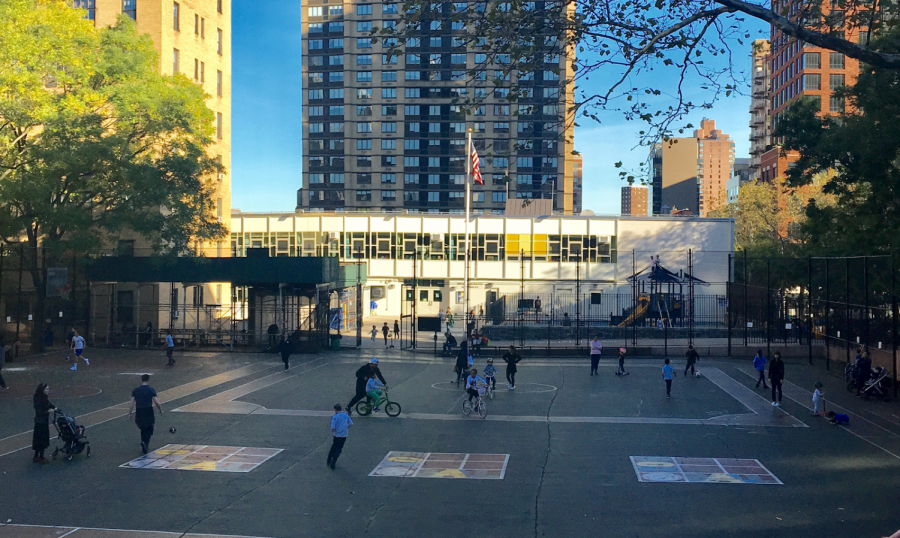The Controversial Plan to Eliminate NYC Gifted Programs
Despite representing 70% of the enrollment of the NYC public school system as a whole, African-American and Hispanic students currently make up only 23% of gifted and talented programs citywide.
Two months ago, the School Diversity Group formed by Mayor Bill de Blasio released a report recommending the elimination of gifted and talented programs throughout the city. Under this controversial plan, gifted programs in Anderson, Nest+M, Q300, and other high achieving schools would be replaced with accessible enrichment programs in an effort to increase diversity.
David Kirkland, an Executive Director of Equity Research at NYU and member of the School Diversity Group, believes that classifying certain students as ‘gifted,’ is problematic.
“The term gifted isn’t neutral. It usually plays proxy for race and class, used to distinguish some students from others, usually on the basis of historical position, and not on merit,” Kirkland said.
“‘Gifted’ was probably the wrong word to use,” said a former principal of a G&T school who wishes to remain anonymous. But she argues that the immediate removal of gifted and talented programs would be a mistake. “All kids need enrichment. All kids need critical thinking. All kids should have access to a rigorous education. Not every kid can do math two to three years above their grade level. That’s where an accelerated program comes in.”
Gifted and talented education in NYC falls into three categories: District G&T schools, citywide G&T schools, and elementary school honors programs. The proposal recommends phasing out all three by continuing current G&T programs, but not allowing any incoming classes. In their place, the report proposes implementing an “enrichment model” with mixed-ability classrooms and individualized programs of study for each student. This proposal was inspired by the success of such programs in Montgomery and San Antonio.
Aidan Domondon ’21 takes issue with the fact that G&T education starts at kindergarten. “Dividing the body of kids that we’re teaching at such an early age causes harm by discouraging the kids that didn’t get in from pursuing their full potential and puts fake pressure on the kids that did.” Domondon argues that these programs are a form of educational sorting that puts certain children on a track to success, and alienates those not on it.
The current system of admissions to New York City’s G&T schools relies on a composite test, which is often a subject of criticism. Even children whose scores qualify them for gifted programs often are not accepted. Last year, there were roughly 2,000 spots in district G&T schools for the 4,000 children who received a qualifying score. The final admittants are determined by lottery.
“[The test] favors economically advantaged students who are able to afford test prep programs; that speaks less to their potential to learn than to previous advantages to which they had access,” said Dennis D. Parker, a member of the School Diversity Group and Executive Director of the National Center for Law and Economic Justice. The former G&T principal agrees that something needs to be changed. “Whenever there’s one measure, people will figure out a way to get tutored and prepped to meet that measure. We saw certain kids from certain families every year.” Money, many note, has become the ‘gift’ being tested.
Critics question the logic of eliminating G&T education. “If all gifted and talented schools are erased, will education really become ‘equal’ between communities? Or will NYC schools all be dragged down, ruining it for every student of every color?” Luke Jin ’21 said. He argues that G&T education is not the root cause of the problems that the system is facing; the educational disparities involve a multitude of socioeconomic factors.
Others think the city needs more gifted and talented schools, not fewer. Leo Matthes ’21 considers the racial discrepancies in school makeup indicative of the fact that many G&T schools are in high income, mostly white neighborhoods. “There just needs to be funding put into areas that are poorer and less white,” Matthes said.
There is a general consensus about the existence of institutional racism that creates barriers for students of color, but there is disagreement on whether eliminating G&T programs is the answer. Mayor Bill de Blasio has the opportunity to enact the recommendations of the School Diversity Group without input from either the City Council or State Department. At this time, de Blasio has not expressed when he will make his verdict.
As the mayor of one of the largest and most segregated public school systems in the nation, de Blasio’s decision will affect the city’s education system for decades to come and will stand as a precedent for how we define model education and the policies that we enact to reach it.
“There just needs to be funding put into areas that are poorer and less white,” Matthes said.
Yona Litwin is a Copy Chief for ‘The Science Survey.' He enjoys the fact that journalistic writing is driven by a variety of voices, and that a single...











